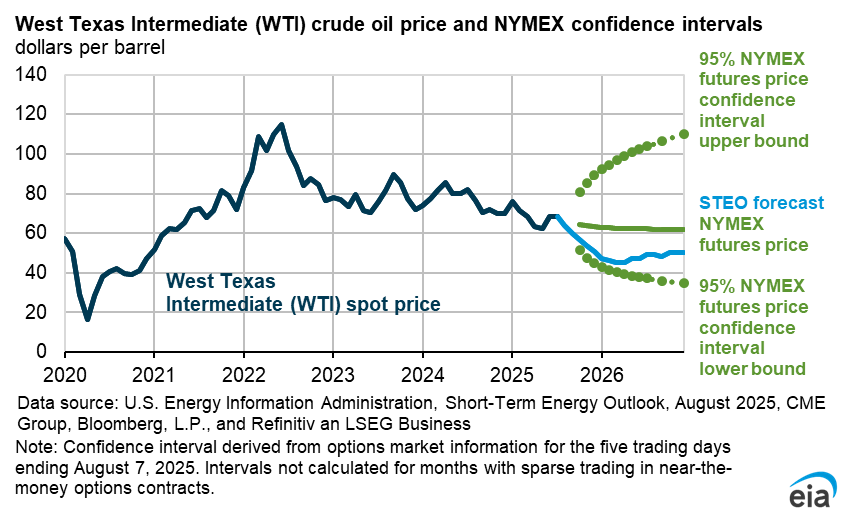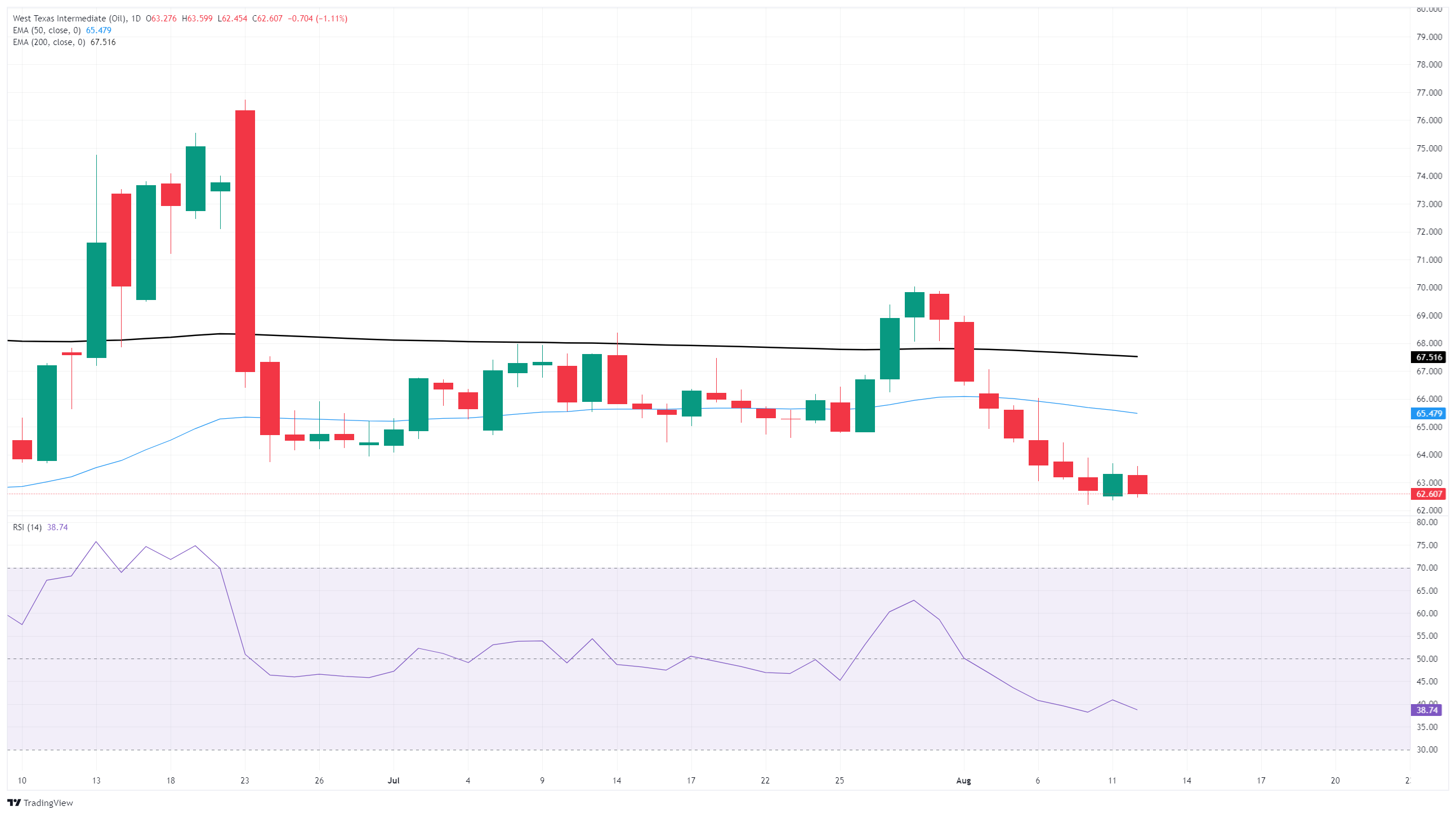West Texas Intermediate (WTI) slid back into the $62.60 region on Tuesday, falling to the low side of near-term consolidation as Crude Oil bulls struggle to find a reason to buy for the time being. The Energy Information Administration (EIA) has adjusted its US Crude Oil production forecast for the remainder of 2025 and heading into the end of 2026, calling for a general increase in WTI output.
US President Donald Trump is still actively pursuing a way to come out as the principal dealmaker in a Russia-Ukraine ceasefire arrangement, and is poised to meet Russian President Vladimir Putin soon. Peace talks involving a country that is not involved in the altercation is unlikely to result in a speedy resolution, but energy markets remain cognizant of the fact that Russia is now struggling to ‘close the deal’ on its three-day invasion of Ukraine, which has now stretched out to 1,265 days.
Rising well counts push EIA production forecast higher
The EIA’s Short-Term Energy Outlook, updated on Tuesday, now expects global Brent Crude Oil prices to ease to $50.00 per barrel in the first quarter of 2026, driven by a combination of easing quota restrictions from OPEC+ countries and still-climbing US well production. The EIA now expects global Crude Oil inventory builds to average 2 million bpd through Q4 2025 and Q1 2026, which will depress barrel prices through its short-term outlook window.
The EIA also expects US Crude Oil production to peak at an all-time high near 13.6 million bpd by the end of December 2025. With well openings and expanse drilling continuing to bolster US production, the EIA is anticipating that a growing supply overhang in early 2026 will be the only thing that will slow the pace of US well drilling.
 WTI price forecast
WTI price forecast
In the near-term, WTI is trapped in an intraday consolidation pattern, trading in a rough band near $64.00 and $62.00 per barrel. WTI is still trading firmly on the low side of the 200-day Exponential Moving Average (EMA) near $67.50, but bearish momentum still remains limited as sellers remain unable to muscle barrel bids back below the key $60.00 per barrel technical level.
WTI daily chart
WTI Oil is a type of Crude Oil sold on international markets. The WTI stands for West Texas Intermediate, one of three major types including Brent and Dubai Crude. WTI is also referred to as “light” and “sweet” because of its relatively low gravity and sulfur content respectively. It is considered a high quality Oil that is easily refined. It is sourced in the United States and distributed via the Cushing hub, which is considered “The Pipeline Crossroads of the World”. It is a benchmark for the Oil market and WTI price is frequently quoted in the media.
Like all assets, supply and demand are the key drivers of WTI Oil price. As such, global growth can be a driver of increased demand and vice versa for weak global growth. Political instability, wars, and sanctions can disrupt supply and impact prices. The decisions of OPEC, a group of major Oil-producing countries, is another key driver of price. The value of the US Dollar influences the price of WTI Crude Oil, since Oil is predominantly traded in US Dollars, thus a weaker US Dollar can make Oil more affordable and vice versa.
The weekly Oil inventory reports published by the American Petroleum Institute (API) and the Energy Information Agency (EIA) impact the price of WTI Oil. Changes in inventories reflect fluctuating supply and demand. If the data shows a drop in inventories it can indicate increased demand, pushing up Oil price. Higher inventories can reflect increased supply, pushing down prices. API’s report is published every Tuesday and EIA’s the day after. Their results are usually similar, falling within 1% of each other 75% of the time. The EIA data is considered more reliable, since it is a government agency.
OPEC (Organization of the Petroleum Exporting Countries) is a group of 12 Oil-producing nations who collectively decide production quotas for member countries at twice-yearly meetings. Their decisions often impact WTI Oil prices. When OPEC decides to lower quotas, it can tighten supply, pushing up Oil prices. When OPEC increases production, it has the opposite effect. OPEC+ refers to an expanded group that includes ten extra non-OPEC members, the most notable of which is Russia.
